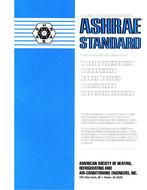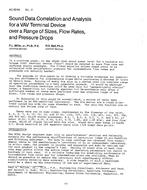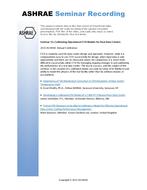The development of lower cost inverter drives has stimulated much interest in the hermetic compressor industry in reducing the energy consumption of hermetic compressors. There have been several articles written claiming an advantage in modulating the speed of a compressor motor to match a given load, rather than cycling the compressor motor on and off to average a given load. The variable frequency inverters on the market today are excellent devices for varying the speed of the motors ; however, the penalty for operating motors from these power sources is the increased motor losses due to the nonsinusoidal voltage supplied to the motor. These increased losses not only reduce motor efficiency, but the increased motor losses reduce compressor output. This paper presents an analysis of two widely used waveforms, six-step and Pulse Width Modulated (PWM), compared to a pure sinusoidal waveform. A standard production three-phase three kW-compressor motor was dynamometer tested using a variable frequency motor-generator set, a six-step Silicon Controlled Rectifier (SCR) inverter, and a PWM power transistor inverter. The motor was then thermocoupled and assembled into a 13472J/s (46000 Btu) compressor and calorimeter tested. The intention of this study is to show how the various waveforms affect the efficiency of the motors, neglecting the inverter losses, and how they affect the output and efficiency of the compressor.
Citation: Symposium, ASHRAE Transactions, Volume 88, Part 1, Houston, TX
Product Details
- Published:
- 1982
- Number of Pages:
- 9
- File Size:
- 1 file , 560 KB
- Product Code(s):
- D-HO-82-02-2


